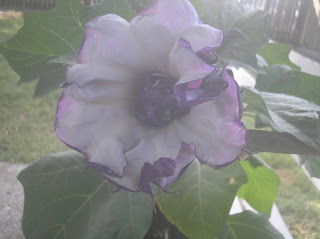Today is a rainy day outside, so my original plan to discuss my patch of Canna Lilies is going to have to wait. I was planning on doing a replanting and to discuss the different varieties of the Canna, as well as the ease of growing of this plant. Oh well!
Instead I have another cool idea...
Wildflowers of the Texas Coastal Bend Part I
What do you think of when you think of Texas? Long horned Steers? Beer? Cowboys? Football? How about Oil, or JR Ewing?
Yes. You probably think of all of those things and probably a few more that I missed. One thing you never think of when you think of Texas though is Flowers. That's unfortunate because that's one of the best things about Texas--the flora and fauna of the Desert terrain.
The state of Texas spends millions of dollars every year on beautifying it's streets and highways by planting seeds and landscaping it's highways and overpasses and still the average person never really pays much attention to the landscape artistry around them. Think about it. When you drive down the street, do you often notice the the things right outside your window, or are you all involved in your cell phone, or perhaps your car stereo? Perhaps you notice all of the trash that litters the highway, but how many of you really notice what exists AROUND all that garbage?
Texas has so much unseen beauty on it's roadways, and that's why I wanted to do today's photo montage of some of the most beautiful flowers to be found in the Texas landscape. Before I even start though, I want to assure you that there are a LOT of wild flowers missing from this. I can't possibly stop everywhere and take photos of the beauty I see there. If I even tried to do that I'd never make it home. This is but a sampling...and a good way to kill a rainy day.
Enjoy!
 |
| Taken off of Laguna Shore Dr in Corpus Christi. There are several huge stands of these Cactus down by the Flour Bluff School turn off. During the spring, the cactus flowers are amazing! |
 |
| Another shot from the same stand of Cacti. |
Contrary to belief, Cactus are not a common sight in the Texas Coastal Bend. There ARE cactus all over the place down here, but most of them have been planted on purpose and are part of landscaping projects.
 |
| Indian Blanket |
You find this flower literally EVERYWHERE in Texas it seems, and it seems to be available during Spring and the first half of summer. It's called "Indian Blanket" and I think it's one of the most beautiful of wildflowers. I'm not sure if this is one that the State plants, as it seems to grow in ditches and in empty fields away from the roads, but it does appear on roadsides too. With it's daisy like petals and rich colors, it reminds me a lot of Gazania's. The plant it grows on can get rather large and you can find stands of these with LOTS of flowers blooming at one time.
 |
| Winecup--aka Poppy Mallow |
One of my personal favorites from here in the Coastal Bend is the Winecup. You'll find these everywhere during February and March, and less often they bloom through July. I've noticed that there aren't as many of them around when rain is scarce in the summer months, but when it rains consistently they are here through July. Some would consider this an invasive weed, and I've seen entire front yards made up of this wildflower. Personally, I wouldn't complain until August, I don't think.
 |
| Showy Primrose--also know as Mexican Primrose |
My absolute favorite Texas Wildflower is the one above--the Showy or Mexican Primrose. This photo is kind of washed out and doesn't really reflect the true pink color of this magnificent flower. The edges are much darker pink, and the centers are white with a splash of yellow, coupled with the Yellow stamin. These are just so beautiful and you can find them in stands with 25-50 flowers blooming at once. Once you've seen a stand of these, you'll never be the same. It's an experience.
Well, that's it for today. I have many other photos of wildflowers from around the Coastal Bend area of Texas and I look forward to sharing them with you. We're just going to have to wait for yet another rainy day to see them. Until then...
Happy Gardening!





















